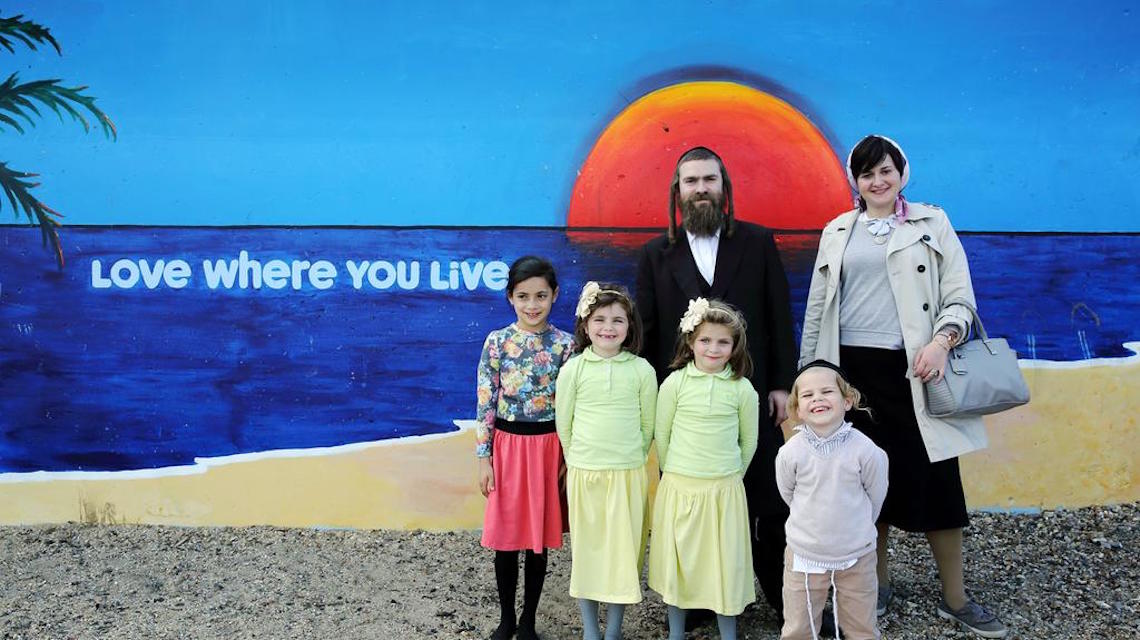I have a friend from Canvey Island, who once convinced me that Dame Judi Dench grew up there too. Maybe I am particularly gullible (I did check Dench’s Wikipedia page, to confirm whether it was true), but to me it just didn’t seem entirely out of the realms of possibility. Fun fact: she was actually born in Yorkshire.
Generally, Canvey Island has a negative reputation. A town separated from the South Essex mainland by a criss-cross of creeks, it is one of the five most pro-Brexit wards in the country, with 73% of the town’s population voting in favour. And while it may also be home to a few “Essex gal” and “boy racer” stereotypes, this environment did not manifest without various important socioeconomic factors. Yet commonly it is the more lazy assumptions which are resorted to in any dialogue.
Surely it’s worth remaining optimistic about the capabilities of a town and its people – after all, Canvey Island birthed Dr. Feelgood, and in the 70s it was home to The Goldmine, an influential nightclub on the motown scene. So maybe there is a tiny chance that Dench might have at least visited the Island once. Although it’s not true that she was born in “Canvey Hospital”, which was “destroyed in the floods” (which my friend also made up and which I also did believe).
Or, if not remaining optimistic, then avoid dismissing an entire community’s experience. Besides, didn’t the reductive treatment of working-class neighbourhoods contribute to the result of the EU referendum?
Anyway – it was exciting when the BBC commissioned a documentary addressing the recent migration of ultra-Orthodox Jews from North London to Canvey. A fascinating event; not only does this draw on delicate political factors, but both the Hasidic and Island communities are so close-knit (with some Canvey residents seeking independence from the mainland). In the case of the Jews, this is being described as their “biggest exodus since the Second World War”. With a history of persecution, do they risk further civil discomfort? And the biggest question of all – why Canvey Island?
Directed by Riete Oord, the documentary’s working title was “The Jews of Canvey Island”. Perhaps there was a slight shift of focus during production – for when it aired in January, the final title was “Canvey: The Promised Land”.
So before the film has begun, the tone is set – for these semantics play jokingly on common perceptions. “ Canvey? It’s not exactly the Old Testament! When’s Moses coming to part the Thames Estuary?! ” See what I mean? It’s an easy joke. Maybe it even pokes fun at the migrating Hasidic community – suggesting short-sightedness, or instilling our disbelief.
But perhaps this is all harmless (if cynical) fun, and the narrative will be built on these misconceptions, before deconstructing them; depicting real dialogue of individuals navigating a complex political landscape.
The introductory minutes close with the narrator’s knowing inclination, “Could there really be a promised land at the end of the A13?” There you go, wink-wink, nudge-nudge, Canvey’s a s***hole . Who is the intended audience? At least anyone drawn in by the comical title. It is in the editing of the film that we can determine whether this will be a sincere exploration or not.
“Canvey: The Promised Land” follows an ultra-Orthodox Jewish family from Stamford Hill, as they plan a relocation to Canvey. We also meet Chris Fenwick, lifelong Canvey resident and manager of Dr. Feelgood (good use of what Canvey has to offer!), as he organises welcoming events between his hometown residents and the incoming families.
After a condensed explanation of rising London prices and overcrowded households, we come to Naftali Noe, living in cramped conditions with his wife, Miriam, and four children. A quick tour of their two bedroom flat shows its need of repair.
“It hasn’t been given to us in a very good condition at all,” says Miriam. “The demands for houses are so, so, so great, that people are taking things in really bad condition.”
So follows narrated statements on the nature of ultra-Orthodox practice (men’s requirement to study the Torah leaves little time to work). In Stamford Hill, 15% of men are employed full time, with 70% of families dependant on benefits. And, included in the narration is that Naftali rents from a Hasidic landlord – but what is not addressed further is why the property is in such disrepair.
Another voice is Steve, Naftali’s friend and neighbour. While Steve is Orthodox, he points out that the primary difference between them is that he doesn’t wear a hat. However, he does keep a kosher household, which we are treated to shots of; a minimalist white interior, stylish tiled flooring. He continues, humorously, “I like the idea of living in Canvey myself actually. But… my wife… she’d put her foot down. Hackney’s become quite trendy for the type of Jews we are.”
With this comment, Steve differentiates himself from Naftali – almost unnecessarily, seeing as we have already been visually informed that he is the more affluent of the two. Perhaps Naftali was simply reluctant to impart more – the Ultra-Orthodox Jewish community can be reluctant to engage with outer agencies, by principle. But throughout the documentary, the more voiced perspective of the two is Steve’s, who is knowledgeable but posited as a relative outsider to the ultra-Orthodox community. Therefore, he is made more relatable than Naftali, and so the community’s perspective of moving to Canvey remains artificially explored.
Also, the majority of shots of ultra-Orthodox Jews are backed by traditional Chassidic music – which further characterises them, limiting their capacity to exist as individuals in the narrative.
Steve accompanies Naftali on a drive down that A13. Meeting families already relocated in Canvey, Steve summarises that there is “a certain optimism there”, but that “it feels like going back to the Shtetl.” As the Chassidic music plays again over Canvey countryside, the negative connotations (for both communities) are clear.

And so to Canvey Island, where panning landscape shots are accompanied by brass music. Very British. We meet Barry Campagne, the soon-to-be Mayor of Canvey, eating a bacon sandwich. “Obviously they’ve got their own traditions and their own religion and that lot,” he says of the Hasidics (closeup of bacon sandwich entering mouth). “So that’ll probably stop them mixing as much as what someone else could.”
I’d like to interject here – I’m from Essex, so I’m aware of how the dialect can come across; the undertones being of ignorance and ill-education. While the incoming Mayor’s perspective is important, obviously not everybody on the Island has this manner of speech (nor are they all ignorant, of course). It feels narrow-minded that the film only features Canvey “natives” of this ilk.
For example, we meet a Canvey family, where one of the children says she thought the Hasidics were Chinese. Her family laugh. “Nah, we go to a different restaurant for that one, babe.”
There is an interesting exchange between Barry Campagne and a friend, as they observe an ultra-Orthodox family on the beach. Barry remarks that they have positioned themselves right at the end of the beach, away from everyone. His companion says he sees no problem. There begins a little back and forth, where Barry realises he has revealed a dubious insight and tries to escape it. He concludes with, “I’m just saying that I think they won’t be able integrate as much because of the rules of their religion.”
Aside from this, the selection of perspectives come without any dispute, contributing to a poor depiction of Canvey residents. And so, the migration’s apparent “novelty” remains the focus. Perhaps this is why “Canvey: The Promised Land”, appears to run out of steam. It closes with Chris Fenwick’s welcoming event, a party for both communities, where he states, “we will eat, we will drink, we will make music, and we will make conversation.” Chris is portrayed with a genuine desire to welcome the incoming communities, and the party should provide the natural climax. But the tension is not there, and the story arc doesn’t manifest. Instead, the documentary’s narrow timeframe is invested in pandering to stereotypes, limiting the investigative scope.
The oddity of the situation is embellished in exchange for the deeper issues at hand. While this may, again, be related to the ultra-Orthodox Jew’s avoidance, Naftali and Miriam are certainly happy to discuss their ancestry and history of exodus. But a quarter of the way into the film, they disappear. To her credit, Oord’s directorial work returns to themes of outsiders – coming from a multi-international background herself. But considering the audience here, Oord has shaped the narrative for entertainment, not investigation. Perhaps the audience don’t care – or they’re not supposed to.
‘The Proof is in the Promised Land’ is an article written by Rose Cleary. You can find out more about Rose on her site.

